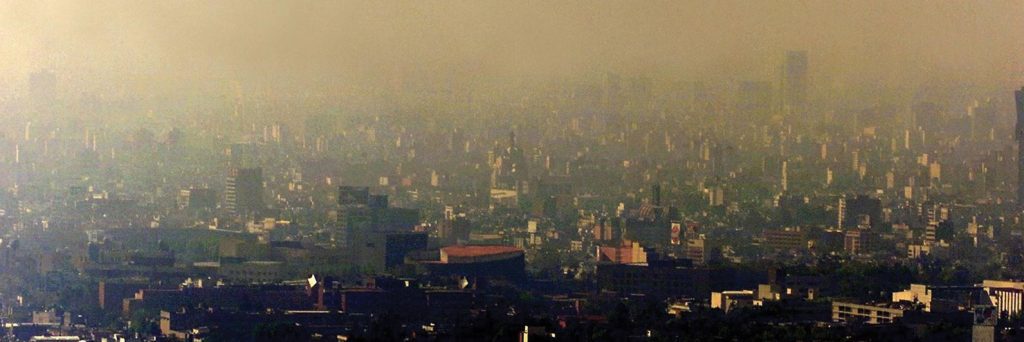Berkeley-Haas recently investigated the truth behind Mexico City’s notorious smog, which Associate Professor of Economic Analysis and Policy Lucas Davis advocates has little to do with the ozone generated (or not) by the city’s congested motorways.
Crash course for those of you who slept through Intro Chem: Ozone, a hazardous “secondary” pollutant that causes smog, is not directly emitted but formed in the atmosphere as a product of other pollutants. Davis explains the simple recipe: “Add sun to volatile organic compounds (VOCs) and nitrogen oxides (NOx). Voila!!”
Davis points out that traffic in D.F. is certainly to blame for carbon monoxide pollution, whose patterns correspond to morning commutes—peaking around 9 a.m. and then dipping accordingly. Ozone levels, however, have a relatively static peak throughout the week—“[typically] in the middle of the day when the sun is highest in the sky”—and into the weekend. “When people drive less, carbon monoxide levels go down. Ozone levels? Not so much,” writes Davis.
When it comes to ozone production, you can’t substitute more VOCs for less NOx or vice versa—you need both. If there’s an area with more of one than the other, a reduction in either will have little impact. Economists refer to this as a “Leontief” production function.
For instance, recent data illuminates that Mexico City is VOC-limited, meaning NOx levels are so high that a simple reduction of NOx would be fruitless. Davis writes, “If you want to reduce ozone in Mexico City, you have to reduce VOCs, [which] come from paints, solvents, adhesives, cleaning products, cosmetics and dog poop,” which happens to be one of the most significant contributors to VOC emissions in the city.
“Driving is not the problem,” says Davis. “There is no evidence that [double driving restrictions on high ozone days] has any impact on ozone levels. Driving restrictions have been widely shown to be an expensive and ineffective approach to addressing air quality.”
Rather than restricting driving, according to Davis, Mexico City should consider adopting more stringent fuel standards. In 1996, Los Angeles adopted California Air Resources Board (CARB) gasoline, whose “strict content requirements for olefins and other highly reactive VOCs” reduced Los Angeles ozone levels by 16 percent, according to research from the Energy Institute’s Max Auffhammer and Ryan Kellogg.
When it comes to ozone reduction, Davis believes we need to focus on hard data before we affect policy.
